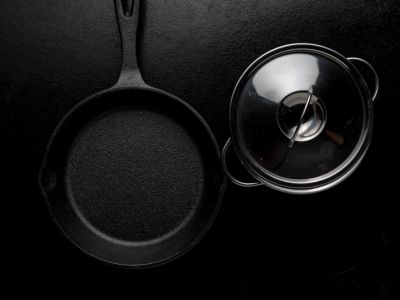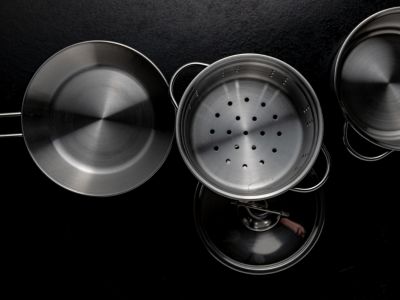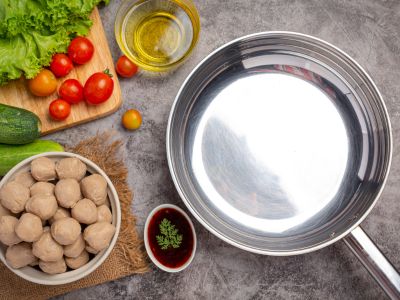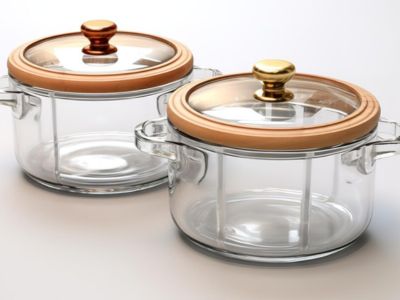When it comes to cooking, the spotlight often shines on ingredients, recipes, and techniques. However, what many of us overlook is the cookware we use daily, an often silent contributor to toxins in our diet. From heavy metals to endocrine-disrupting chemicals, the wrong cookware can impact your health in ways you might not expect.
Let’s understand the lesser-known risks associated with cookware and explore safer alternatives for a healthier kitchen.
What Makes Non-Stick Cookware "Non-Stick"?
Non-stick cookware, often coated with polytetrafluoroethylene (PTFE), more commonly known as Teflon, revolutionized home cooking with its convenience. However, the very property that makes it non-stick comes at a cost. When heated to high temperatures or scratched, non-stick coatings can release harmful chemicals such as perfluorooctanoic acid (PFOA). These chemicals are known to accumulate in the body and the environment, posing risks to human health.
Table of Contents
The Hidden Dangers of Cookware: Key Health Concerns
Hormonal Disruption and Endocrine Disruptors: Certain cookware materials and additives, like per- and polyfluoroalkyl substances (PFAS) and plastics containing Bisphenol A (BPA), can mimic hormones. These compounds disrupt the endocrine system, potentially leading to thyroid disorders, infertility, and metabolic imbalances.
Carcinogenic Potential and Heavy Metal Leaching: Long-term exposure to chemicals like PFOA, along with heavy metals such as aluminum and lead, can increase cancer risks. These metals may leach into food when cooking acidic or salty dishes, posing severe health risks, including cognitive decline and cardiovascular diseases.
Respiratory Issues and Toxic Emissions: Overheating non-stick pans releases fumes that can irritate the lungs, causing "polymer fume fever." Additionally, scratched or overheated cookware emits volatile toxins that irritate respiratory pathways and accumulate in the body over time.
Mindful Choices for Healthier Cooking
Your cookware is just as important as the food you prepare in it. By making informed decisions, you can minimize exposure to harmful substances and ensure that your meals nourish your body without unintended toxins.
Actionable Steps
- Transition to safer cookware options such as cast iron, stainless steel, or glass.
- Avoid cooking acidic foods in reactive materials like aluminum.
- Regularly inspect your cookware for signs of damage and replace it as needed.
Every small, mindful decision you make in the kitchen contributes to a healthier lifestyle for you and your family. Don’t let convenience overshadow the importance of safety, because what’s on your plate begins with what’s in your pan.
Choose Healthier Alternatives: Top 5 Safest Cookware Options
1. Clay Cookware

Ideal for Indian slow-cooked curries, biryanis, and dal, clay pots naturally enhance flavors and retain nutrients. They balance acidity, making them perfect for tamarind-based dishes like sambar and rasam. Soak the pot before use for added durability and authentic taste.
2. Cast Iron

Perfect for Indian staples like dosas, parathas, and shallow-fried snacks, cast iron cookware adds dietary iron to meals. Its ability to retain high heat makes it ideal for tempering spices and preparing curries. Regular seasoning prevents sticking and adds a rich flavor.
3. Stainless Steel (100% Food Grade)

Stainless steel works excellently for sautéing masalas, boiling rice, and deep-frying pakoras. It doesn’t react with acidic ingredients like tomatoes or tamarind, ensuring authentic flavors. Its rust resistance makes it a durable choice for daily Indian cooking.
4. Triply and Carbon Steel

These cookware types are excellent for stir-frying vegetables, preparing quick curries, and making delicate Indian dishes like paneer bhurji. Their even heat distribution prevents burning, while toxin-free cooking ensures health benefits without compromising taste.
5. Glass Cookware

Glass cookware is great for baking Indian desserts like seviyan kheer or layered biryanis. Its leach-free nature makes it safe for serving hot dals or curries. Transparent designs let you monitor food while retaining authentic flavors.
Think Pink: Together, We Create Change
Did you know the products you trust might not always be what they claim to be? Foods marketed as healthy often hide additives. Skincare labeled as “clean” may contain harmful chemicals. Lifestyle products, like cookware, often fall short of their bold claims.
With ThinkPink, which is built on trust, transparency, and change, we believe in empowering consumers to make choices that genuinely support their well-being.
Together, we aim to:
- Make transparency the standard, not the exception.
- Demand products that deliver on their promises.
- Create a future where well-being is prioritized, not compromised.
By choosing safer cookware and advocating for honest practices, you become part of a larger movement to create a better, healthier world. One voice can make a difference, but together, we can reshape the system.
Want to know more about ThinkPink, visit our Instagram page to get a deep insight.
Disclaimer: This content is for informational purposes only and is not a substitute for professional medical advice, diagnosis, or treatment. Always consult your healthcare provider before trying any new food items, supplements, or products, especially if you have an existing medical condition or allergies.
You can reach out to us for expert assistance at +917059700700
Or write to us at [email protected]
Do you have any questions? Feel free to drop them in the comment box below.
Reference:
Sajid, M., & Ilyas, M. (2017). PTFE-coated non-stick cookware and toxicity concerns: A perspective. Environmental Science and Pollution Research International, 24(30), 23436–23440
Coperchini, F., Croce, L., Ricci, G., Magri, F., Rotondi, M., Imbriani, M., & Chiovato, L. (2021). Thyroid disrupting effects of old and new generation PFAS. Frontiers in Endocrinology (Lausanne), 11, 612320
Palsania, P., Singhal, K., Dar, M. A., & Kaushik, G. (2024). Food grade plastics and Bisphenol A: Associated risks, toxicity, and bioremediation approaches. Journal of Hazardous Materials, 466, 133474.




Comments